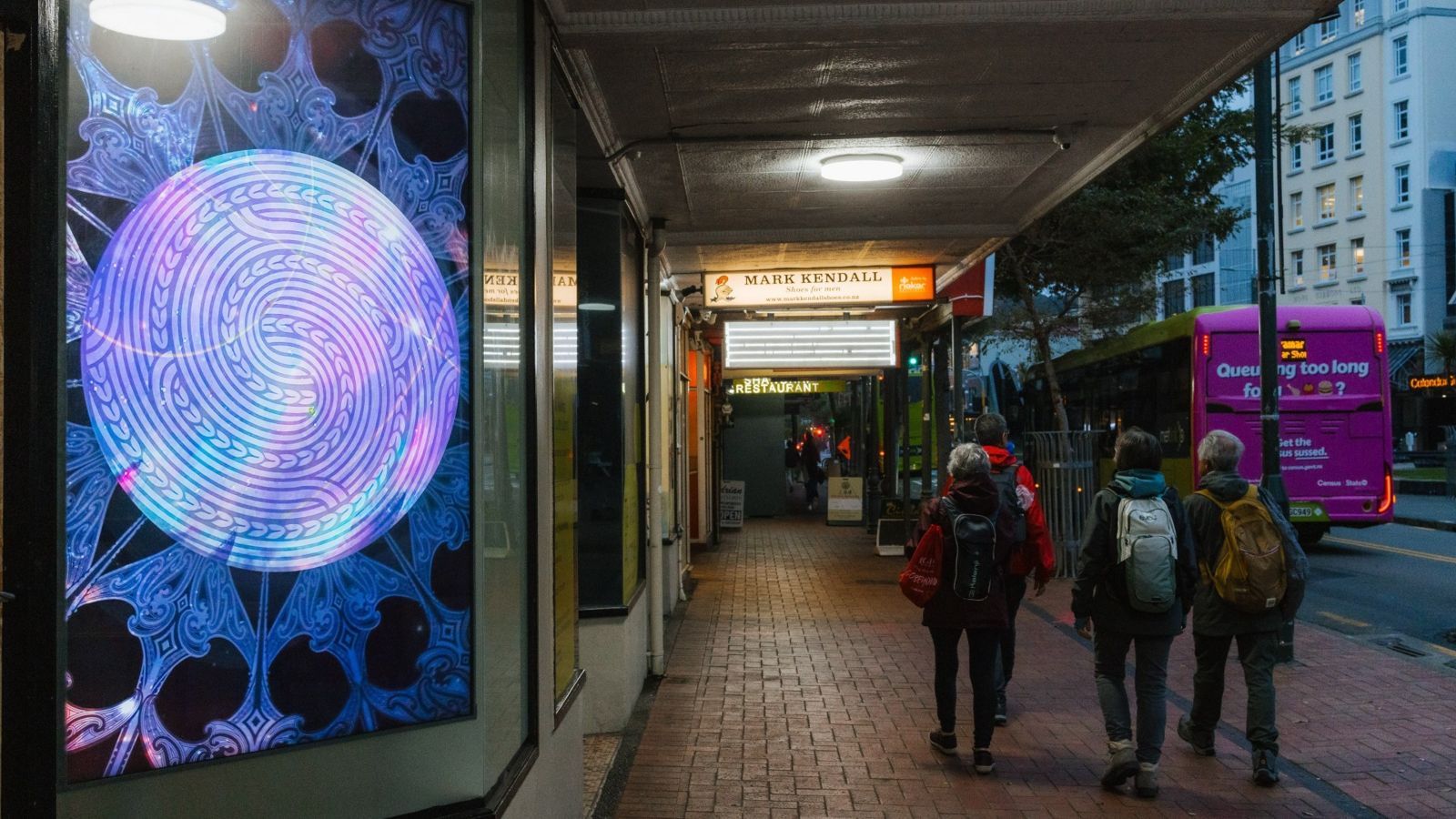Artist pathways at Te Aro Pā site
Wellington City Council presents Te Whakaaturanga o Te Aro Pā, two digital screens showing artists’ visual representations that connect to the deep history and cultural significance of Te Aro Pā.

The digital screens project, installed at 115 Manners Street, is a creative collaboration and partnership with the Te Kura Hoahoa—School of Design Innovation at Te Herenga Waka—Victoria University of Wellington, which will present a body of artistic projections to celebrate the rich heritage around Te Aro Pā and the iwi who connect to the surrounding whenua.
Te Whakaaturanga o Te Aro Pā is located next to the Opera House, on the Te Aro Pā site, near the Waimapihi stream.
The exhibition space acknowledges the mana of this site of significance and aligns with Council’s Aho Tini 2030 Arts, Culture, and Creativity and Tūpiki Ora strategies – producing pathways for artists, making toi Māori more visible, and telling stories of our city, specifically with narratives related to Te Aro Pā and mana whenua.
The project, supported by Council, also provides career opportunities for artists in Pōneke.
“Providing opportunities for young creatives in the city is key to retaining the talent that comes out of our tertiary institutions. Projects like this, which pay emerging and established artists for their mahi, and provide an opportunity to showcase their talent, are key in fostering a successful creative sector in our city,” says Sophie Jerram, Council’s Programme Manager Aho Tini.
Digital designer David Hakaraia (Ngāpuhi, Ngāti Pāoa), a senior Māori lecturer at Te Kura Hoahoa—School of Design Innovation and Deputy Head of School, will curate the first twelve months of the video programme, in collaboration with Toa Waaka (Ngāti Toa, Te Āti Awa, Ngā Puhi, Ngāti Porou, and Ngāti Koata) as mana whenua advisor on pūrākau (Māori myths and legends).
“The significance of acknowledging the mana whenua and their deep-rooted history cannot be overstated. Whanganui-a-Tara and Te Aro Pā bear witness to the rich cultural tapestry woven by these iwi who have called this place home for centuries. Their stories, customs, and traditions shape the very essence of this land, and it is our duty to honour and respect them,” says David Hakaraia.
The inaugural work was “Whai Repo” by artists David Hakaraia and Tom Trengrove.
The shallow water and the abundant food around the lagoon in Te Whanganui-a-Tara attract the Whai Repo (Eagle Ray). This digital representation pays homage to the Whai Repo as kaitiaki (guardians) of the surrounding moana.
The next works, by artist Tanya Te Miringa Te Rorarangi Ruka, are on display 2 June – 31 July.
“Waimapihi” is a documentary film work gathered from Te Aro and Waimapihi reserve, the source of the awa that runs below the Opera House.
“Aue te Manuhiri” is the name of her other work and of the karakia gifted by Jane Mihingarangi Ruka of Ngati Pakau, Ngapuhi descent.
Tanya’s film piece is supported by Toi Taiao Whakatairanga, a cross-disciplinary research project, bringing together arts, science, and Te Ao Māori to raise awareness of threats to the health of our ngahere (forest) such as Myrtle Rust and Kauri Dieback.
The digital works at Te Whakaaturanga o Te Aro Pā will be changed four times a year.
The final installations, in Council’s collaboration with Te Herenga Waka—Victoria University of Wellington, will be created by the University's students Waiaria Willoughby-Vilijeon (Ngāpuhi,) Nicholas Gartner (Ngāti Tuwharetoa and Ngāti Kahungunu), and Tom Trengrove.
Media release published with permission from Wellington City Council.
